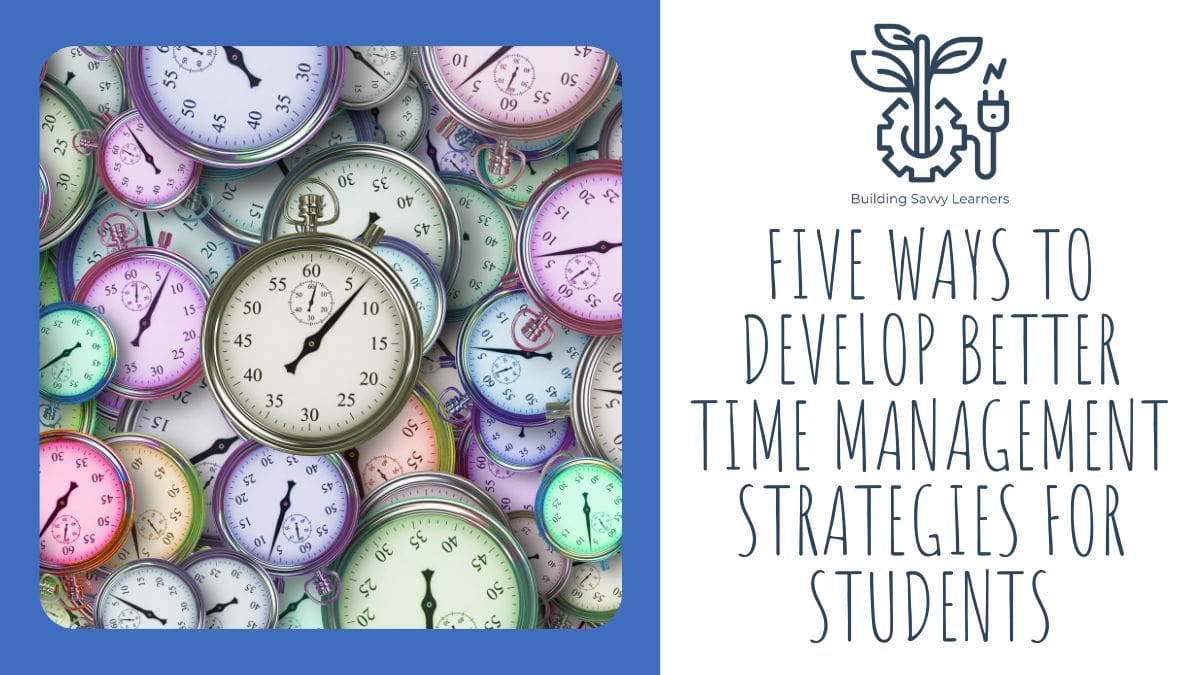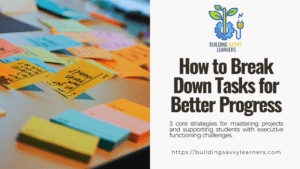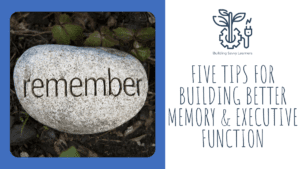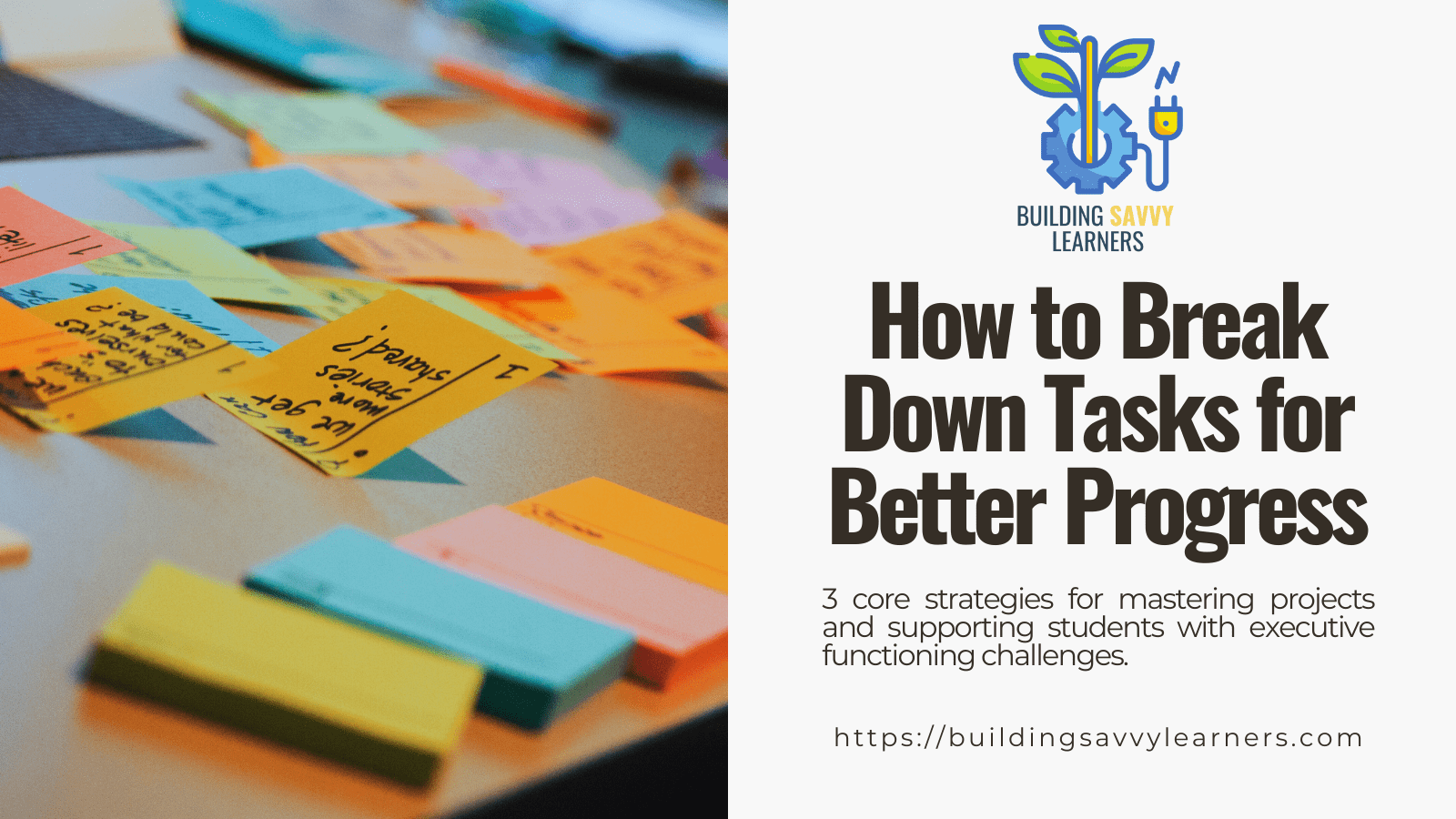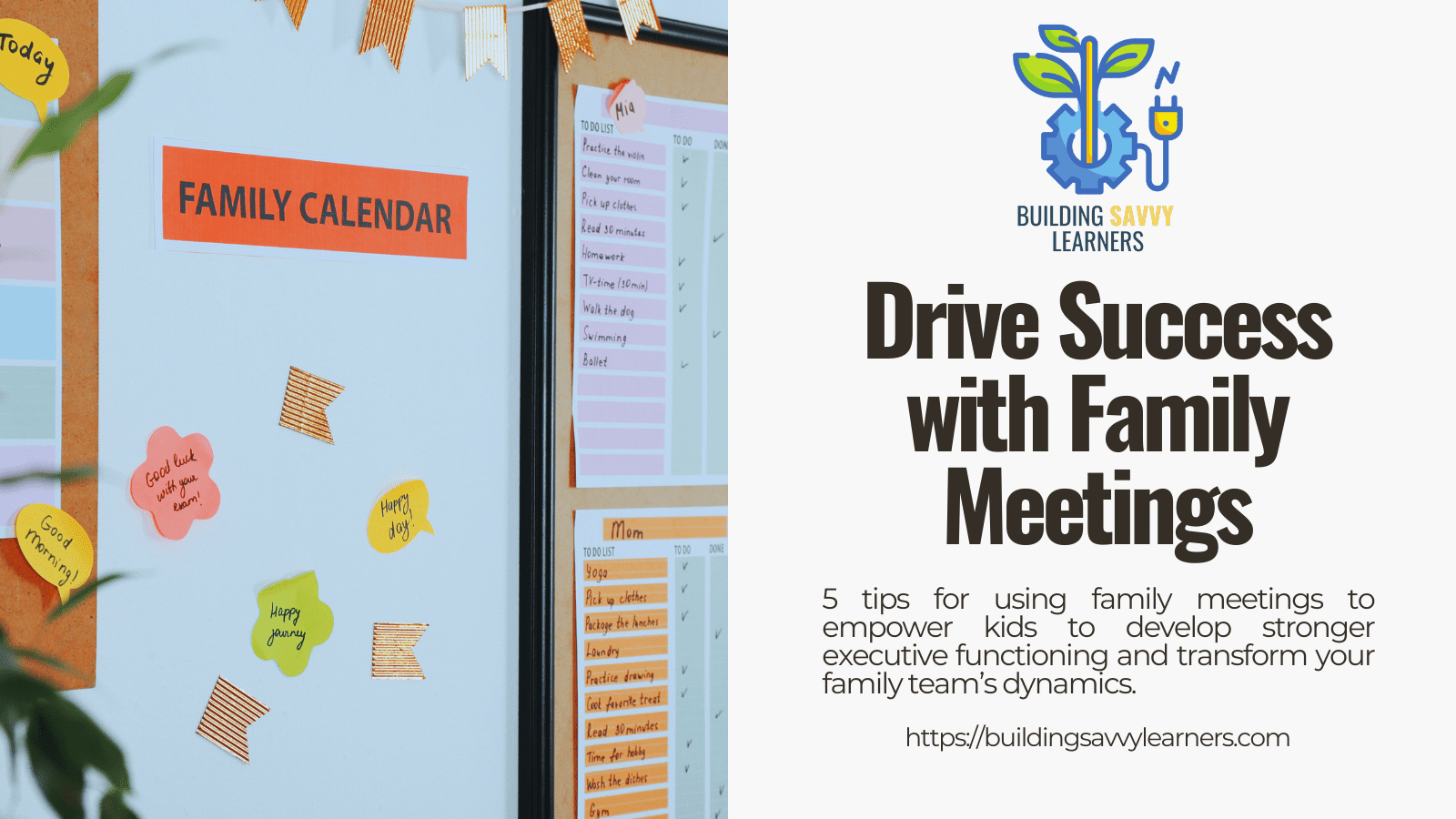Time management strategies for students are a common need for those with weaker executive function skills. If your child often runs late or waits until the last minute to start tasks, there could be a variety of reasons why. Thinking about the umbrella of executive function skills, students may struggle with planning the steps needed to complete a task. As a result, they may underestimate the actual amount of time needed.
The struggle could also be related to organization. Maybe they’re ready to start a task or get ready to go, but they can’t find the materials needed. Then they spend a bunch of extra time searching for things.
Or maybe they forget they were supposed to do something or go somewhere, or they have difficulty transitioning from one task to another.
Executive dysfunction can make time management extra difficult. Add to this the fact that many kids experience time blindness — a lack of awareness of the passing of time — and this issue becomes even more complicated. A request for 5 more minutes on a video game could easily turn into an hour or more without intervention. Often, the child isn’t trying to be manipulative; they just don’t have the self-awareness to detect the passage of time in the same ways that adults might.
[Related: Does my child need help with their executive function skills?]
(Note: This post contains affiliate links. As an Amazon associate, I earn from qualifying purchases. That means if you click on a link and make a purchase, I will get a small commission at no additional cost to you. To learn more about why I use affiliate links, you can read my disclosure policy. Thank you for supporting Building Savvy Learners.)
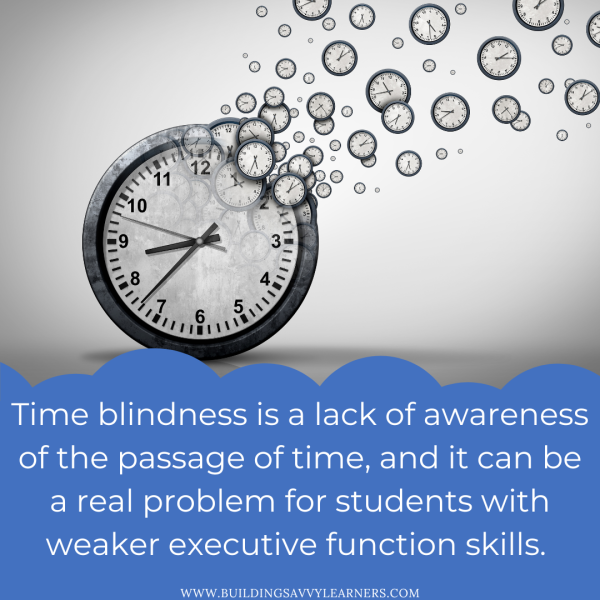
Student Time Management Strategies
So what to do? Here are five ways to develop better time management strategies for students.
Strategy #1: Make a General Schedule for the Week Using Time Blocks
Sometimes we all get sucked into time wasting activities without even realizing it. Video games and social media are especially designed to make them hard to put down. And if you’re bad at managing time or transitioning from one activity to another to start with, these kinds of activities can become a vortex.
One way to bring awareness to the situation is to design a weekly schedule with time blocks of what an ideal week would look like. What time is bedtime? When do we have extra-curriculars or other scheduled events? When should we eat or do homework? How much time does that leave for other things we want to do?
Having a big picture sense of what the week should look like will make it easier to enforce limits on things that may be wasting time. It will also provoke some discussions about what is a reasonable time to spend on different activities. There’s a big difference between 30 minutes on TikTok and 3 hours.
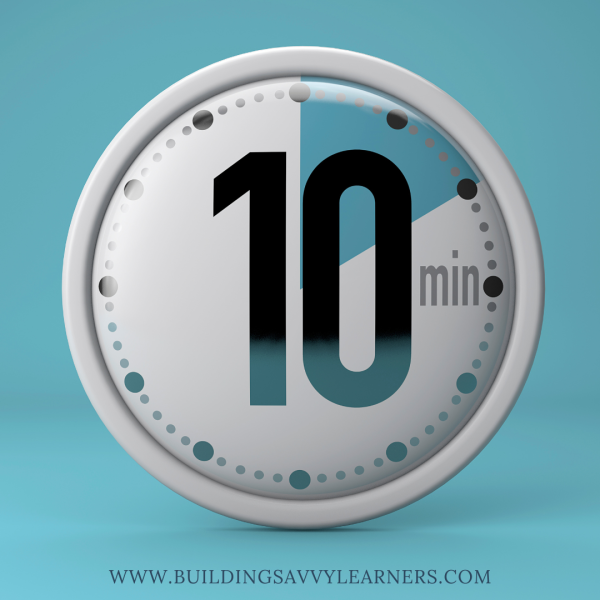
Strategy #2: Counteract Time Blindness by Using Timers
Timers can be a huge help to students who have time blindness or struggle with time management. For example, you can give a 5 minute warning and set a timer to help ease the transition from a preferred task like video games to a less preferred task like homework.
Similarly, you can use timers for the total amount of time to spend on a task. For challenging tasks like homework, for example, you could use the Pomodoro Technique for working for 25 minutes and then taking a 5 minute break. Repeat this as needed to complete the task. Or you could tell your child to spend 5-10 minutes cleaning up a space and challenge them to see how much they can get done in that time. Having a clock running with a countdown visual can be a motivating and effective way to make young people more aware of time. Timers are your most important tool when it comes to time management strategies for students.
Strategy #3: Build Better Time Awareness by Estimating and Checking
As your child is developing their sense of time, it can be helpful to develop time estimation skills. One way to do this is by planning a task.
Let’s say your child is expected to read a chapter of a book for homework. Before they start, ask them how long they think it will take them to complete given the text length and features. Once they give an estimate, use a count-up timer to see how long it actually takes them to finish. Then debrief about how close their estimate was to the actual time it took.
Often, students will underestimate the amount of time a task will take. If that happens, you can bridge this into a conversation about combatting potential distractions or maintaining focus.
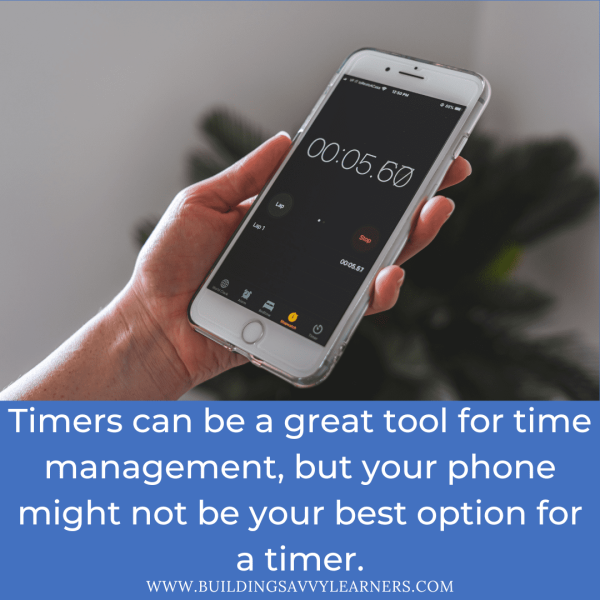
Strategy #4: Ditch the Phone as Your Timer
Did you know that the mere presence of a smartphone can result in brain drain? According to a study by Ward et al. (2017), having a smartphone with you—even if you’re not actively using it or looking at it—affects your working memory. It also occupies some of the cognitive resources you may need to complete a task. When you use your phone as a timer, you run the risk of all sorts of distractions. You might decide to check your email while you’re on your way to the timer app, or you notice notifications of text messages when you check to see how much time you have left. All these activities can derail your progress toward accomplishing your goal.
I recently purchased these timers to use at home. They come in a two-pack, so I keep one in my office where I work and one that I use in every other room. I like that they have number buttons so I can enter a precise countdown time with hours, minutes, and/or seconds without having to hit one button repeatedly. The alarm sound is annoying enough to get my attention when the timer goes off. It also has a flashing light in case I’m listening to something on my headphones. If I’m using it to signal a transition to another activity, I will put it out of reach across the room so that I’ll be forced to get up to turn it off. That breaks the inertia of continuing whatever activity I was doing.
Strategy #5: Use Focus Apps as a Time Management Strategy for Students
During times when breaking from your device isn’t an option, you try to minimize its potential to create distractions. At the very least, silence notifications and turn on a focus or do not disturb mode.
There are now even apps that can gamify the experience for tweens, teens, and adults. I recently tried out the Forest App (available on iPhones, Androids, and as a Chrome Extension), and it definitely deterred me from mindlessly using my phone. The premise is that every time you set a timer in the app for focused work, you plant a sapling in your forest. If you pick up your phone and open another app, your sapling dies. But if you work the entire time your timer is going, you’ll add a tree to your forest. You’ll also earn coins that can be redeemed for different types of trees. It’s a fun way to track productivity and decrease distractions.
If you’d like to try out the Forest app yourself, you can use my referral code: 5WRCAVRSG. It will send both of us extra in-app coins to diversify our forests.

Conclusion
Time management skills are critical aspects of executive function, but they can be some of the hardest skills to develop. Having a bank of strategies to fit a variety of tasks and circumstances can build the foundation for better awareness of time. Change won’t happen overnight. But with sustained practice, students can improve their time management skills.
What time management strategies work for your family? Which new strategies are you interested in trying? I’d love to hear from you in the comments section or connect with me on my social media.
Did you know that Building Savvy Learners has a weekly newsletter? Each Friday, I send out a newsletter filled with resources and an executive function strategy that’s exclusive to my subscribers. If you’re not already on my mailing list, you should join through this link.

